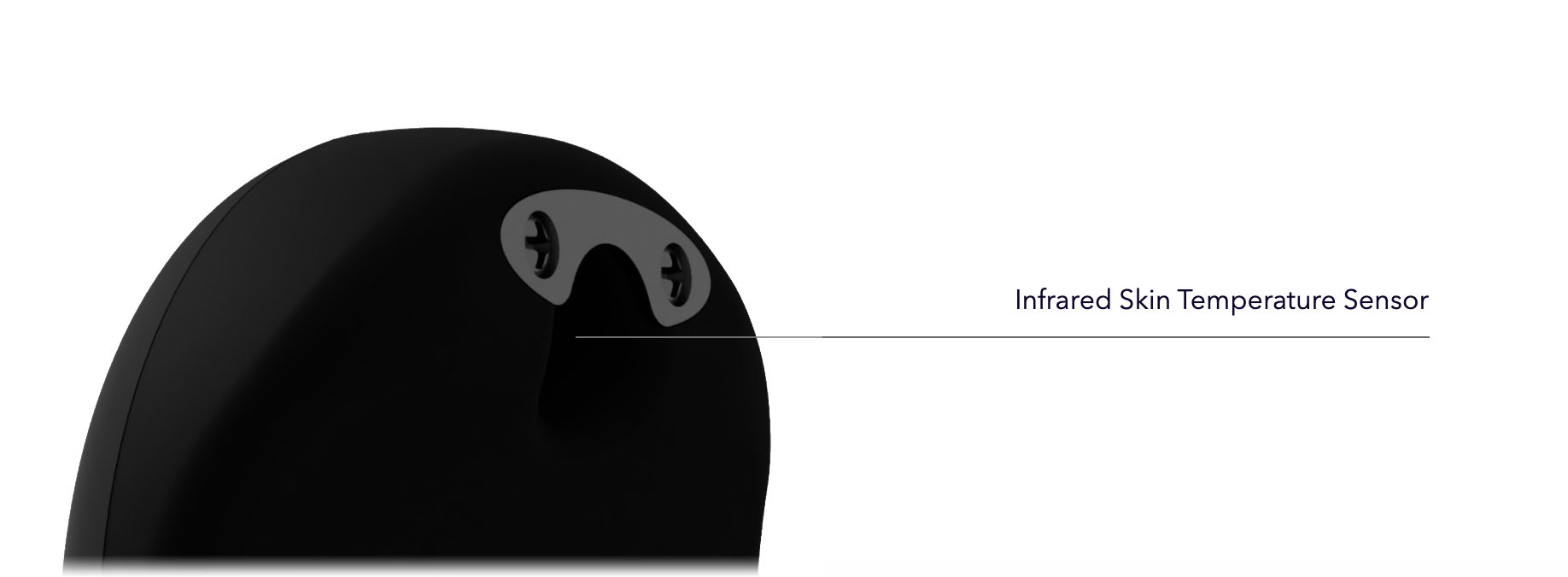Back to SupportMeasuring skin temperature
Updated onJuly 31, 2021
When using Aidlab, you have a small and very efficient thermometer at your disposal.

It measures your skin temperature in the middle of other readings, collecting data from your chest. It was chosen as the best place with thin skin and warm blood flowing directly from the heart. The cardiovascular system of the chest lets us collect very accurate measurements. The whole measurement takes just several seconds.
What is skin temperature
Skin temperature (often between 32.0-36.3 °C) is a temperature reading from your body's surface and depends largely on air temperature and time spent in that environment. Such weather factors as wind chill and humidity cause changes in skin temperature. Skin temperature oscillates predictably with the time of day. Thus, a healthy temperature at any site is described by a range of values, rather than a fixed value. This is important because when temperature is used to determine the relative health of an individual, a group mean will not necessarily accurately categorize an ideal temperature for all members of that group. Some healthy individuals would be expected to have values higher or lower than the mean and these values would, in theory, be normal for them. Your skin temperature varies parabolically from 83 deg F. (28.2 °C) at an ambient temperature of 49 deg F. (9.5 °C) to 98 deg F. (37.2 °C) at an ambient temperature of 95 deg F (35 °C) [1].
Skin temperature is often confused with core (usually circa 37 °C) and body temperature (normally between 36.5–37.5 °C for healthy person). While some people think of these averages as representing normal or ideal measurements, a wide range of temperatures has been found in healthy people.
Quality issues
Several conditions have to be met, as many factors influence this reading:
Ambient temperature. The best temperature for a measurement to be taken is the room temperature of 23–25 °C, or 73–77 °F. Fluctuations of the temperature will have a great impact on the measurement.
Wrong angle. If Aidlab is held in the wrong position, not properly touching the chest, the measurement can be random or disturbed.
Covered vision. Aidlab will have problems measuring temperature if there is something, like hairs, between the sensor and the chest. Any dirt or mud will also influence the measurement, leading to damage to the sensor.
Windy weather. Aidlab works best indoors, making temperature readings taken outside untrustworthy, as the chest temperature fluctuates outside. It is caused by wind, sun, or rain.
Thick skin. Aidlab tries to take measurements directly from your veins. It can be problematic if the skin above them is too thick or scarred. As there are several points to collect measurement from the chest, try other places.
Temperature readings affected by any of the above conditions can be of low value to your doctor. We are working to make this technology even better than it is. New algorithms for temperature calculation are on their way, same as our motion detection, which will help you use Aidlab while moving. In future releases, influence of negative factors will be limited.
Why should I measure skin temperature?
One of the most important reasons for measuring skin temperature is to avoid heat stroke. Traditional heart disease can lead to a heart attack during a race, even in apparently healthy middle-aged runners, and many young runners train and race with undetected congenital heart conditions. The same goes with skin temperature. No matter what the temperature is outside, your skin temperature will increase over time with exercise. When you run hard – your body generates a large amount of heat, and if you can’t get rid of it effectively, this could result in a heat stroke.
Read more to learn about the relationship between core temperature, skin temperature, and heat flux during exercise in heat [2].
[1] Dr. K.R. Koehler College Physics for Students of Biology and Chemistry, University of Cincinnati
[2] Xu X, Karis AJ, Buller MJ, Santee WR., Relationship between core temperature, skin temperature, and heat flux during exercise in heat.
Aidlab isn’t a substitute for proper medical testing. It isn’t intended as a diagnostic tool and won’t be marketed as such until it receives FDA clearance to allow readings for clinical use.
